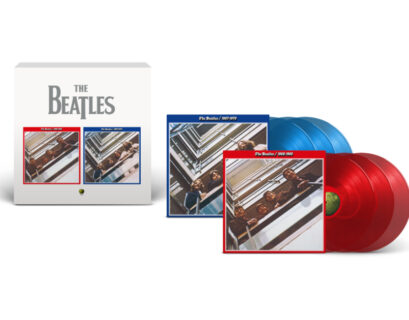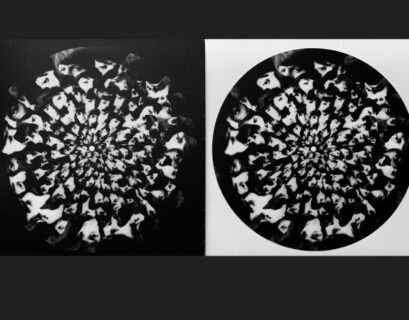It’s the time of year for saving money!
If you are reading this review of the new 50th Anniversary edition of Let It Be I assume you know some of the back-story on the making of the Let it Be album and the challenges the band faced in creating the recording as we know it today. If you missed part one of my listening report on the new Stereo and Surround mixes, please click here to catch up on that important portion which explores final producer Phil Spector’s vision for the recordings in 1970. And if you want even more insights on the entire related celebration series — including an upcoming documentary! — please click here to jump to my earlier preview overview.
One of the central elements in the Let It Be legacy (and rock ‘n roll mythology, if you will) revolved around a series of test mixes and and potential album concepts assembled — back in the day before Phil Spector’s work — by acclaimed engineer/producer Glyn Johns. Test mixes were pressed on one-off acetate discs and distributed to the band members for consideration. But, in short, nothing was ever formally decided upon and ultimately Johns’ idea for what the Get Back album (as it was known then) might have been was shelved.
However, before it was nixed and put into the archies, someone outside the Beatle’s internal universe got their hands on the recording — Lennon is quoted in the book in the new boxed set that he thought it was probably his copy — which leaked out. And, before you knew it bootlegs were appearing on the underground market being sold to ravenous hardcore Beatle fans even before the Let It Be album was eventually released (after Abbey Road) in 1970. Over the years various and sundry versions of this bootlegged — really, pirated would be a better word — album have appeared sometimes bearing rather sophisticated production qualities that looked — and sounded — quite legitimate to the average consumer (especially by the CD era).
Well, now that we have the genuine real deal version of the Get Back album included with the new 50th Anniversary edition of Let It Be super deluxe edition boxed set. Now, this infamous and beloved precursor can take its rightful place alongside Phil Spector’s mix in Let It Be history.
Glyn Johns’ Get Back album is important because in it is indeed closer in concept to The Beatles’ original vision for what the album was supposed to be about in the first place: a return to their roots, more stripped down and live sounding. That back to the egg (if you will) idea was taken all the way down to the album’s original design, which mimicked The Beatles’ first album, Please Please Me, featuring an updated photo taken in the exact location as their debut release.
If you are listening to Get Back for the first time, you need to go into this with open ears. There are some very cool things happening on it but it is a much rawer listening experience, intentionally far from the pristine sheen of Abbey Road or even Spector’s Let It Be mix.
Listening to Get Back you feel a bit like (in Glyn Johns’ words) a “fly on the wall,” which was part of his intent. At times you’ll hear songs start and stop in an abrupt manner as if you were in the studio with the group as they rehearsed. You’ll hear snippets of studio chatter and other noises one wouldn’t necessarily come upon in a polished commercial album release. Some of the spoken word bits appear in very different places than where they showed up on Spector’s Let It Be. Most notably, Lennon’s famous line about hoping the band “passed the audition” appears at the end of Get Back‘s opening track “One After 909” instead of at the end of the song “Get Back” at the end of the Spector / Let It Be version.
You will even hear works in progress such as Paul McCartney’s song “Teddy Boy” which eventually was released (in different form) on his first solo album. We get to hear fun impromptu jams and a charming off the cuff romp through The Drifters’ “Save The Last Dance For Me.”
From my perspective Get Back is essential listening for even the casual Beatle fan (thus I dedicated a whole review to my listening report series!).
How important was this album’s original concept to The Beatles themselves? Well, decades later eventually Paul McCartney took it upon himself to try to recreate the vibe they were going for initially, issuing Let It Be… Naked in 2003. Using different takes from the session, that album went a long way to correct some public perception about what the Get Back album might have been like.
I find Glyn Johns’ approach more intriguing and ultimately satisfying as an end-to-end album listen, however. Between the three versions you should be able to get a good sense of the depth and flexibility of the music on these albums.
Many younger Beatle fans may find Glyn Johns’ versions of Get Back appealing because it frankly sounds like an indie rock album. I’ll put it this way: if you like Guided By Voices’ patchwork approach on their legendary albums like Bee Thousand, you might well enjoy the vibe and surprises on Get Back.
Ultimately, we will never know what Get Back might have been had the group finished it the way they’d originally intended back in the day. But Glyn Johns’ Get Back is the next best thing, especially when coupled with the wealth of great sounding studio outtakes which we now have officially at our fingertips (more on that tomorrow).
Get Back sounds fantastic and I could imagine hearing it played on FM radio in the 1970s or the 1990s! Hopefully it will get some airplay in the 00s!
The compact disc version of Get Back sounds wonderful, warm and round and very much like one might expect the raw Let it Be recordings to sound.
And if the CD sounds this good, I suspect that the vinyl edition will sound even better so as soon as I get a copy of that version in hand, I’ll be sure to share an updated listening report with you here on Audiophile Review. I do wish Get Back was included on the Blu-ray Disc in the set, but alas that was not to be. However, the album is streaming in high resolution 96 kHz, 24-bit fidelity on Qobuz Hi Res (click here) and Tidal MQA (click here). Get Back sounds fab there!
Get Back is also a great way to whet one’s palate for remainder of the new boxed set so please tune in tomorrow when we’ll explore some of the outtakes on the new 50th Anniversary edition of Let It Be.



















